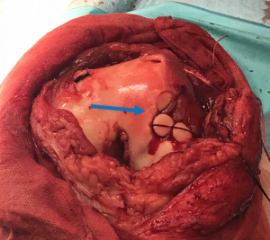Osteochondral defects of the knee are segments of the knee cartilage and bone which detaches from the underlying bone. This can cause pain, swelling, clicking, catching and locking of the knee. They typically affect young people, and more commonly men than women.
An osteochondral defect is comprised of varying amounts of bone (osteo) and cartilage (chondral). The depth of the OCD determines the quantity of bone and cartilage that are affected. Cartilage typically has very little healing potential, whereas bone heals well when it is in the correct position (eg undisplaced broken bones). Traumatic OCDs are typically associated with direct injuries or kneecap dislocations. These are usually displaced and do not heal by themselves.
Osteochondritis Dissecans (OCDs without trauma) occur during childhood for unknown reasons. There is a spectrum of these lesions ranging from undisplaced lesions with intact cartilage to completely displaced and free floating loose pieces of bone and cartilage within the knee.
SURGICAL OPTIONS
Surgery for OCDs may involve either arthroscopic (keyhole) surgery or open surgery depending upon the type of lesion involved. Surgical Options include:
- Removing the lesion
- Drilling
- Fixing with screws
- Fixing with dissolving pins
- Cartilage grafting from other areas of the knee
- Cartilage grafting from donated cartilage
Dr Maor will discuss these options in greater detail during your consultation

Cartilage Grafts (blue arrows) – “OATS” Procedure to fill the OCD

